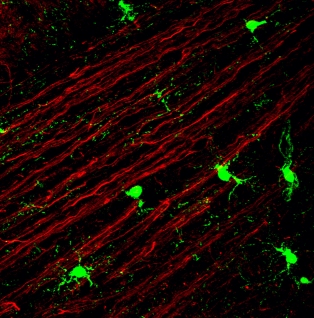Aftermath of NG2 cells
 Johns Hopkins scientists with the recent fete seem to have tracked the aftermath of a group of immature cells that persevere in the adult brain.
Johns Hopkins scientists with the recent fete seem to have tracked the aftermath of a group of immature cells that persevere in the adult brain.
The findings reveal that the cells, named as NG2, seem to sprout fast at an early phase of life, and eventually resulting in develop into mature nervous system cells called oligodendrocytes. These "oligos" aid in fastening the process of transmission of electrical impulses by offering insulation in the vicinity of nerve cells.
This insulation is termed as myelin, and seemingly disrupted in nervous system ailments like multiple sclerosis.
The team seemingly has diagnosed the life cycle of NG2 cells present in case of both normal mice and mice with a mutant form of the SOD1 gene that results in forming of ALS. They used a stringent system that allowed them to colour-tag only the NG2 cells and then tag the cells at varied times in their growth stages. The studies showed that NG2 cells resulted in developing a silent program of division in adult tissues, sometimes substituting them with self and rest times via forming new oligos.
Dwight Bergles, associate professor in The Solomon H. Snyder Department of Neuroscience, Johns Hopkins University School of Medicine said, “A slow and steady turnover of oligodendrocytes may be required throughout life to maintain myelin.”
"They undergo explosive division, morph more readily into abnormal-looking oligodendrocytes and then, uncharacteristically, those differentiated cells quickly die. The brakes that normally hold these cells in check appear to be gone in ALS," Bergles said.